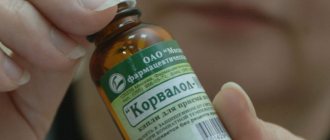Today, almost every third person who complains about their health to a doctor is diagnosed with hypertension. The disease is dangerous not only for its consequences, which include death, but also for the sharp deterioration in the patient’s quality of life. It is important to pay attention to the first manifestations of the disease in time, since stage 1 hypertension is easier to treat than advanced disease. What pressure is considered normal and what to do if a mild form of arterial hypertension is diagnosed?
Causes of the disease
Arterial hypertension is a disorder of the cardiovascular system, characterized by an increase in systolic blood pressure (the first digit on the tonometer) above 140 mm Hg.
Art. and/or diastolic (second digit) – above 90 mm Hg. Art. It can occur as an independent disease or result from another pathology. The most common is hypertension or essential hypertension, which develops independently, without obvious reasons. It occurs in 90% of patients with high blood pressure.1
Secondary or symptomatic hypertension is directly related to other diseases or factors that can be controlled.1 This form of the disease is usually suspected in young people under 30 years of age with high blood pressure.
The main causes of secondary arterial hypertension are2:
- Obstructive sleep apnea syndrome.
- Kidney diseases.
- Neoplasms of the adrenal glands – pheochromocytoma.
- Pathologies of the thyroid gland: thyrotoxicosis, hypothyroidism.
- Congenital abnormalities of the heart and blood vessels, including coarctation of the aorta.
- Primary hyperaldosteronism.
- Itsenko-Cushing syndrome.
- Side effects of medications such as: oral contraceptives, non-steroidal anti-inflammatory drugs, antiviral drugs.
Risk factors
There are a number of factors that increase the likelihood of developing hypertension. The most significant include:
- Age. The risk of high blood pressure increases with age, mainly after age 65.
- Hereditary tendency to arterial hypertension.
- Overweight.
- Physical inactivity, lack of physical activity.
- Smoking, including passive smoking.
- Excess salt and potassium-containing foods in the diet.
- Alcohol abuse.
- Chronic stress, frequent emotional stress and lack of sleep.
- Pregnancy.
- Early menopause.
- Heart rate exceeding 80 beats/min at rest.
Prevention
Hypertension is easier to prevent than to treat. To do this, you should adhere to a number of rules that are mandatory for people who are at risk for developing diseases of the cardiovascular system.
- Stop smoking. A bad habit narrows blood vessels, making them fragile and inelastic. Of course, one cigarette a day is not enough to develop hypertension. But if you smoke 10 or more cigarettes a day, the blood vessels are in a state of constant spasm and simply cannot function normally.
- Limit your alcohol intake. The permissible dose of strong drink per day for men is 20 ml, for women - 30 ml.
- Include regular physical activity in your daily routine.
- Walk outdoors more often. This will allow you to fully supply the body with oxygen, which is necessary for the functioning of the heart and blood vessels.
- Salt is a real poison for potential and actual hypertensive patients. The daily norm is only 6 g, which doctors do not recommend exceeding.
- It is important to get rid of excess weight, which creates additional stress on the heart and other internal organs. There is no point in losing kilos suddenly. Optimal weight loss should not exceed 10% of the initial weight.
- Enrich your diet with foods containing potassium, calcium and magnesium necessary for vascular and heart health. These are: egg yolks, dried fruits, low-fat cottage cheese, beans, parsley. This diet will reduce the likelihood of pressure surges.
- The number of animal fats per day should not exceed 60 g, which will prevent the formation of atherosclerotic plaques and blood clots.
- Minimize the amount of stress, try to go to bed and wake up at the same time, getting at least 8 hours of sleep a day.
Advice! Visit your doctor regularly to promptly identify arterial hypertension, diseases of the heart, blood vessels, nervous system, and endocrine system.
Treatment of hypertension is a long process. After its completion, you must adhere to recommendations regarding nutrition, daily routine, and physical activity. The sooner you begin to eliminate the disorder, the more effective the therapy will be, and the lower the likelihood of complications of the disease.
What are the different degrees of hypertension?
Normal blood pressure is considered to be between 110/70 and 130/85 mm Hg. Art., which on average is the well-known 120/80 mm Hg. Art. With arterial hypertension, there is an increase in systolic blood pressure above 140 mm Hg. Art. and/or diastolic above 90 mm Hg. Art.
The degrees of hypertension are determined depending on the systolic (SBP) and/or diastolic (DBP) blood pressure (Fig. 1).
Figure 1. Degrees of hypertension in adults. Source: MedPortal, photo by cottonbro: Pexels
As a rule, at the first stage of development of hypertension, serious structural changes in the internal organs and structures of the body do not yet occur.
If hypertension continues to develop, over time, excessive blood pressure on the walls of the arteries will negatively affect both the blood vessels themselves and the target organs: the brain, retina, heart. The higher the pressure and the longer it remains uncontrolled, the greater the potential threat of decreased visual acuity, deterioration of cognitive abilities, heart pain, etc.
The most significant complications of arterial hypertension are:
- Myocardial infarction.
- Heart failure.
- Loss of visual acuity and blindness.
- Stroke.
- Dementia.
Hypertensive crisis is a complication of arterial hypertension in which blood pressure suddenly rises to 180/120 mmHg. Art. and more. In this case, direct damage to target organs occurs. This condition requires emergency medical care in a hospital setting.
Treatment regimen
The first thing that is recommended for every hypertensive patient is to eliminate factors that increase the risk of complications. It is necessary to quit smoking and drinking alcohol, engage in acceptable physical activity, lose weight, and pay attention to the treatment of diseases of internal organs and systems.
Stage 3 hypertension can only be treated under strict medical supervision. The treatment regimen is drawn up individually, taking into account age, gender, degree of risk, and the presence of associated complications. In any case, the patient is prescribed medications that can help reduce blood pressure during a crisis, as well as medications taken daily that gradually stabilize the patient’s condition.
The list of medications that must be taken for stage 3 hypertension includes:
- Adrenolytics;
- Diuretics;
- ACE inhibitors;
- Beta blockers;
- Calcium antagonists.
These drugs help stabilize blood pressure, which significantly improves well-being and minimizes the likelihood of another hypertensive crisis.
Important! It is also necessary to treat concomitant diseases - diabetes mellitus, renal failure, endocrine disorders.
Differences between degrees and stages of hypertension
In clinical practice, several classifications of arterial hypertension are used simultaneously. Of key importance is the division of this pathology into degrees and stages of development.1
If the degree is determined depending on the pressure indicators, then the stage of the disease depends on the severity of target organ damage and the presence of clinical conditions associated with high blood pressure, diabetes mellitus and chronic kidney disease. There are 3 stages of arterial hypertension:
- Stage I: There is no end organ damage or associated clinical conditions, but there are associated risk factors. In addition to those previously mentioned, this also includes a number of laboratory indicators: lipid and blood sugar levels, uric acid and others.
- Stage II. There is asymptomatic target organ damage, determined by the results of additional examination and/or stage 3 chronic kidney disease and/or concomitant uncomplicated diabetes mellitus.
- Stage III. The presence of manifesting target organ damage and clinical conditions associated with hypertension, stage 4-5 chronic kidney disease or complicated diabetes mellitus.
Consequences of the disease
The forms of the disease are divided according to the degree of risk to the patient’s life. The most severe of them is arterial hypertension of the 3rd degree - the risk of 3 cardiovascular complications (CVD). This means that there are three or more factors influencing the course of the disease. If with stage 2 hypertension the probability of heart attacks and strokes is 20%, then at stage 3 of the disease it increases to 30%.
When diagnosing, the degree of risk of cardiovascular complications is taken into account, which can be used to make a forecast for the next 10 years
Hypertensive crises become prolonged and in some cases end in pulmonary edema, coronary heart disease or cardiac arrest. Accompanying high blood pressure are aggravating syndromes in the form of pathological disorders in the functioning of target organs, diabetes mellitus, atherosclerosis, and heart failure. Often these complications of arterial hypertension become the causes of mortality at the age of 55-65 years.
If stage 3 hypertension (risk 3) progresses to stage 4, the person becomes disabled, unable to lead a normal lifestyle and work.
Important! Hypertension in the fourth stage is called isolated. Treatment of vessels worn out to the maximum is to maintain life, and not to eliminate symptoms that medicine cannot get rid of. A person is unable to care for himself and becomes disabled.
Symptoms of stage 1 hypertension
Clinical manifestations of stage 1 hypertension often go unnoticed or are completely absent, since the body’s compensatory capabilities neutralize a slight increase in blood pressure.3 Because of this, the disease is often called the “silent killer.”
If high blood pressure levels persist for a long time, nonspecific symptoms may appear, including:
- Throbbing or pressing headache with the epicenter in the occipital region.
- Tinnitus and dizziness.
- Flashing "flies" before the eyes.
- Increased and rapid heartbeat.
- Nosebleeds.
- Poor exercise tolerance and shortness of breath.
- Swelling of the lower extremities, numbness in the legs.
Complications of arterial hypertension
Under conditions of constantly elevated blood pressure, the walls of blood vessels thicken and lose their ability to relax, which prevents normal blood supply and saturation of tissues and organs with oxygen and nutrients. Various serious complications arise, including the following:
- Hypertensive crisis;
- myocardial infarction;
- stroke;
- angina pectoris;
- heart failure;
- cardiac ischemia;
- chronic renal failure;
- retinopathy;
- atherosclerosis, etc.
When should you see a doctor?
In most cases, arterial hypertension is detected during a routine examination or seeking medical help for another disease or condition. Therefore, if there are risk factors, regular visits to your family doctor or primary care physician are recommended.
An unscheduled consultation or call to emergency medical services is required in the following situations:
- Decreased effectiveness of medications taken – situations where previously effective antihypertensive drugs no longer work.
- Increased blood pressure during treatment.
- The appearance of side effects from drug therapy.
- Deterioration of general condition while maintaining current blood pressure numbers.
- A sharp increase in blood pressure to more than 180/120 mmHg. Art., that is, the development of a hypertensive crisis.
- A sudden decrease in systolic or diastolic blood pressure of 30 mm Hg. Art. and more.
Reasons for the development of arterial hypertension
The exact cause of the development of hypertension has not yet been established, however, a clear relationship has been identified between hypertension and the following factors:
- Exposure to stress;
- hereditary predisposition;
- age;
- gender (AH is more common in men);
- abuse of table salt;
- smoking and alcohol;
- endocrine disorders;
- excess body weight;
- physical inactivity;
- kidney diseases;
- increased adrenaline levels;
Modern diagnostic methods
24-hour blood pressure monitoring can help diagnose hypertension.
Photo: Minaart / Depositphotos The diagnosis is often made based on blood pressure readings obtained from tonometry and patient interview data.
In order to identify potential causes, as well as to assess risks to human health and select the most appropriate treatment regimen, a number of laboratory and instrumental studies are additionally carried out.
The examination program for a patient with arterial hypertension includes:
- Laboratory tests. This includes routine general blood and urine tests, as well as determination of a number of biochemical parameters, including: blood glucose, uric acid, sodium and potassium levels, total cholesterol and high and low density lipoproteins (HDL-C, LDL-C), serum creatinine blood followed by calculation of glomerular filtration rate (GFR).1
- Instrumental diagnostics. For patients with newly diagnosed arterial hypertension, in order to exclude white coat hypertension (increased pressure as a result of fear or “tremor” in front of the doctor), 24-hour blood pressure monitoring with simultaneous recording of an electrocardiogram (ECG) according to Holter is recommended. Also, if necessary, ECHO-CG, ultrasound diagnostics of the kidneys, duplex scanning of the vessels of the kidneys, head and neck, fundus examination (ophthalmoscopy), computed tomography or magnetic resonance imaging (CT or MRI) of the brain are performed.1
Features of treatment. Conservative therapy
Treatment tactics depend on the results of previous diagnostics and laboratory parameters, as well as the risk of developing cardiovascular complications. However, in the conservative treatment of arterial hypertension of the 1st degree, a key place is occupied by lifestyle correction, which, if necessary, can be supplemented with pharmacotherapy.
Lifestyle changes: tips for patients with hypertension
The first and one of the most important aspects in the treatment of arterial hypertension and the prevention of complications is changing a person’s behavior and habits, aimed at eliminating or minimizing risk factors. Recommendations for patients with hypertension include7:
- Quitting the consumption of alcoholic beverages and tobacco products.
- Rational, balanced nutrition. In this case, preference should be given to fruits and vegetables, whole grains and fish, avoiding foods high in salt and trans fats.
- Normalization of body weight, treatment of obesity.
- Maintaining moderate physical activity, neck exercises, massages.
- Limit your intake of sugar and high carbohydrate foods.
- Avoiding frequent stress.
- Normalization of the daily routine, ensuring adequate sleep.
What foods should you not eat if you have high blood pressure?
Eating certain foods that increase blood pressure can be dangerous if a person already has hypertension. In this case, follow a special diet, excluding or limiting the use of:
- salts, seasonings and food additives containing sodium;
- strong tea, coffee containing caffeine;
- fatty, fried, spicy foods;
- pickles and canned foods;
- smoked meats;
- baked goods, sweets;
- fast food;
- sweet carbonated drinks;
- frozen semi-finished products: pizza, dumplings (may contain a lot of sugar, sodium, saturated fat to preserve taste);
- alcohol.
One of the tools for monitoring your condition is the so-called pressure diaries. They should record your systolic and diastolic blood pressure readings every day, adding comments regarding your well-being if necessary.
Also, do not miss follow-up visits to the doctor. In this way, the doctor will be able to monitor the effectiveness of the treatment prescribed and, if necessary, make adjustments or replace insufficiently effective medications.
How to measure blood pressure using a mechanical tonometer
In order to measure pressure with a mechanical tonometer (video 1), you need:
- sit in a comfortable position and relax, while your arm should be bent at the elbow joint and lie on a flat surface,
- remove the shoulder part of the arm from clothing and fasten the cuff on it (its lower edge should be 3-4 cm above the elbow bend),
- place a stethoscope (phonendoscope) on the inside of the elbow joint in the place where the pulse can best be felt,
- using a hand pump, start pumping air into the cuff,
- bring the pressure gauge needle to values exceeding the expected pressure by 30-40 mm. rt. Art. (for example, if the patient’s normal blood pressure is 135/90, then you can stop at 170),
- slowly release air from the cuff, waiting for tones to appear - these are the sounds of a heartbeat; their appearance marks the boundary of systolic pressure, and their disappearance marks the boundary of diastolic pressure. Simply put, if tones appeared at number 150 and disappeared at number 100, then the result is 150/100).
Video 1. How to correctly measure pressure with a mechanical tonometer.
Drug treatment
Drug therapy is usually prescribed if lifestyle changes have not normalized blood pressure within 3 months.1 Depending on the presence of structural changes in target organs and the risk of complications, one or more drugs may be used. The main means are:
- Angiotensin-converting enzyme inhibitors (ACE inhibitors): captopril, ramipril. They help relax blood vessels, blocking the formation of ACE, a chemical that constricts them.
- Angiotensin II receptor blockers: valsartan, losartan. These medications relax the blood vessels, blocking the action rather than the formation of ACE.
- Calcium channel blockers: verapamil, nifedipine. They relax blood vessels and can also slow down the heart rate. Often prescribed to elderly people.
- Diuretics. There are different classes of diuretics, including thiazide (hydrochlorothiazide), loop (furosemide), and potassium-sparing (triamterene).
- β-blockers: atenolol, bisoprolol. They reduce the strength and frequency of heart contractions, also dilating blood vessels.
Additional agents that can be used as adjuvant therapy in certain situations2:
- α-blockers: doxazosin, prazosin. Suppress nerve signals traveling to blood vessels, reducing the effect of natural chemicals that narrow them.
- Aldosterone antagonists: spironolactone, eplerenone. They block the action of aldosterone, which is responsible for maintaining salt and fluid in the body and can contribute to increased blood pressure.
- Vasodilators: hydralazine and minoxidil. They act directly on the muscles of the artery walls, preventing their contraction.
- Renin inhibitors: aliskiren. They slow down the production of renin, a kidney enzyme that triggers a chain of chemical reactions that increases blood pressure.
Important! When using drug treatment, you should clearly know the areas of application of a particular drug recommended by your doctor. Some medications should be taken regularly, regardless of blood pressure readings and even in situations where the numbers are within the normal range. Other medications are used only when necessary, for example, when there is a sudden increase in blood pressure and a deterioration in general condition. It is better to always have such drugs with you.
What to do during a hypertensive crisis?
Vivid symptoms of hypertension usually occur with a sharp rise in blood pressure - the development of a hypertensive crisis. When the pressure rises above 220/120 mmHg. Art. and/or the appearance of symptoms of a complicated crisis (severe weakness, nausea, vomiting, visual disturbances, acute headache, heart pain, impaired speech or consciousness, limitation of movements in the limbs), it is necessary to urgently call emergency help.
Emergency actions in this situation boil down to ventilating the room, maintaining bed rest, maintaining a calm environment, and taking antihypertensive drugs (Fig. 2).
Figure 2. First aid for hypertensive crisis. Source: MedPortal
Folk remedies against hypertension
Ginger tea is beneficial for people with high blood pressure.
Photo: jcomp - ru.freepik.com In addition to drug therapy, traditional methods of treatment can be effective adjuncts. They include a variety of tinctures and decoctions from various plants, roots, leaves or berries. The following have a proven antihypertensive effect:
- Ginger tea.
- Ginseng infusions and teas.
- Foot compresses with apple cider vinegar.
- Decoctions with sunflower seeds.
- Pomegranate juice.
- Dark chocolate (containing at least 60-70% cocoa, in moderation) and cocoa.
- Celery juice.
- Garlic.
- White mistletoe decoction.
- Dietary supplements or foods that increase nitric oxide or dilate blood vessels (vasodilators), such as: cocoa, coenzyme Q10, L-arginine.
- Omega-3 fatty acids found in oily fish, high fish oil supplements and flax seeds.
Various procedures can also help reduce high blood pressure, including massage courses for the back and collar area, contrasting water procedures for the feet and hands, etc.5, 6
Important! Traditional medicine cannot be the only method of treatment. Also, many medicinal plants contain biologically active substances that can cause adverse reactions. Therefore, before using them, you should definitely consult a doctor.
Diet for hypertension
At this stage of the disease, a person is forced to change not only his work and rest schedule, but also make adjustments to his usual diet. Without doing this, you will not be able to bring your blood pressure readings to normal levels that are not life-threatening. A sample menu for the day consists of:
- an omelette and a cup of tea with milk for the first breakfast;
- baked apple for second breakfast;
- vegetable soup, a portion of buckwheat with a steam cutlet for lunch;
- mashed potatoes with a piece of boiled fish and rosehip broth for dinner;
- a glass of kefir before bed.
Dried fruits are perfect as a snack; they have a beneficial effect on the condition of the entire cardiovascular system.
When compiling a list of dishes for the week, you must adhere to several rules that are mandatory for hypertensive patients. This:
- Salt is a poison for high blood pressure. You should cook food without it, adding salt directly on the plate if necessary.
- The diet excludes fried, salted, canned, smoked, and spicy foods.
- The basis of the diet is vegetables, fruits, cereals, lean meats and fish, boiled, steamed or baked in the oven.
- Control the amount of food entering your body. It should not exceed 2 kilograms.
- Serving size: no more than 300 g.
- The number of meals is 5-6 times a day.
- Caffeinated drinks are excluded. They should be replaced with decoctions of fruits, berries and herbs, green tea, compote.
- Alcohol in stage 3 hypertension is strictly prohibited. When taking a minimal amount of ethanol, the risk of hypertensive crisis increases.
- You can arrange fasting days on fruits, vegetables, milk.
- To normalize blood pressure, the body must receive magnesium, calcium and potassium, vitamins B, C and P every day.
Such nutrition will help cleanse blood vessels, reduce cholesterol levels in the blood, and lose a few extra pounds.
Hypertension is a dangerous disease, the complications of which kill about 9 million people worldwide every year. This outcome can be prevented by promptly responding to any changes in the body. For example, the prognosis for a diagnosis of stage 1 hypertension is usually favorable, which cannot be said about a disease that has progressed to stage 3 and is burdened with all sorts of complications.
Forecast
With arterial hypertension of the 1st degree, as a rule, it is possible to avoid a further increase in blood pressure without the use of pills - by eliminating risk factors and changing a person’s lifestyle.
However, sometimes it is impossible to do without appropriate antihypertensive therapy and drug treatment. Taken together, following simple rules of behavior and regularly taking pills allows you to most effectively control the condition and prevent the development of serious complications such as myocardial infarction or stroke.
Sources
- Russian Cardiological Society. Clinical guidelines “Arterial hypertension in adults”, 2021.
- High blood pressure (hypertension). Mayo clinic. 2021.
- T. V. Ashcheulova, T. N. Ambrosova, V. I. Smirnova. “The main symptoms and syndromes of hypertension and symptomatic arterial hypertension: method. decree. for students” / comp. – Kharkov: KhNMU, 2021. – 32 p.
- Tabassum N, Ahmad F. Role of natural herbs in the treatment of hypertension. Pharmacogn Rev. 2011;5(9):30-40.
- Givi M. Durability of effect of massage therapy on blood pressure. Int J Prev Med. 2013;4(5):511-516.
- Mohebbi Z, Moghadasi M, Homayouni K, Nikou MH. The effect of back massage on blood pressure in the patients with primary hypertension in 2012-2013: a randomized clinical trial. Int J Community Based Nurses Midwifery. 2014;2(4):251-258.
- Marjorie Hecht "Types and Stages of Hypertension". Healthline. 2019.










